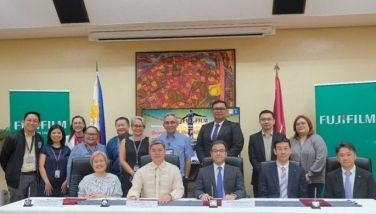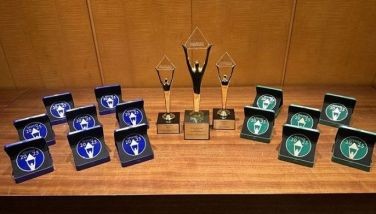Marketing the country

Now that there’s a new secretary of tourism, what happens to the comprehensive National Tourism Development Plan that was presented only about seven weeks ago to President Aquino?
Within the P-Noy Cabinet, Alberto Lim was seen (and portrayed by groups after his job) as diffident and unassertive, to borrow descriptions that are most unpopular these days at Malacañang.
While being his diffident and unassertive self, Lim drew up that tourism development plan, identifying the problems bedeviling the industry and proposing a so-called cluster approach to tourism development.
Considering all the roadblocks, the tourism roadmap aimed for a 100 percent increase in international arrivals between 2011 and 2016, or 6.3 million foreign visitors a year by the time P-Noy steps down. That figure is modest compared to the tourism arrivals in several neighboring countries. The roadmap also aimed for 32 million domestic travelers and P1.3 trillion in tourism earnings by 2016, with the industry generating 5.16 million jobs.
The plan was supported by major foreign and local business groups and one faction of feuding tourism industry leaders.
Obviously P-Noy was unimpressed. Lim resigned shortly after he briefed the President in late July about the roadmap. As replacement, P-Noy picked someone we can safely presume is not diffident and unassertive: advertising and marketing executive Ramon Jimenez.
Before Bertie Lim’s resignation, he was planning to bid out the contract for another tourism marketing campaign for the Philippines. That unfortunate tourism logo presented last year, plagiarized from Poland, op-art coconut tree and all, was the start of his troubles.
At the time, several quarters – and not just the usual carping critics – wondered why a new logo and slogan were needed when “Wow! Philippines” seemed good enough.
The inevitable speculation was that “Wow! Philippines” was too associated with former tourism chief Richard Gordon, the 2010 presidential candidate whose personality is the opposite of diffident and unassertive.
So it’s a safe bet that the P-Noy administration still wants its own tourism slogan. What that will cost taxpayers is anybody’s guess. The plagiarized logo, plus accompanying tourism campaign, reportedly cost P5 million.
Malaysia’s catchy “Truly Asia” slogan and campaign reportedly cost a whopping $1.5 million. How much are Pinoy taxpayers willing to fork out for a tourism campaign?
Among the proposals in Bertie Lim’s tourism roadmap was a bigger budget for marketing. But the bulk of his recommendations focused on improving tourism infrastructure – a task that required the involvement of many other government agencies, and therefore the coordination of efforts by the President himself.
Maybe P-Noy decided that instead of adding to his workload, he would find a new tourism chief instead.
So now we have a new man in charge of creating a Philippine brand.
* * *
The country does have many existing attractions that can use better marketing to both domestic and foreign travelers.
In my trips overseas, I often tell foreigners to skip certain overhyped travel destinations in Asia and instead consider Philippine attractions, or at least add our country to their travel plans.
Except for people already in the travel industry, those foreigners have not heard of our diving and snorkeling areas, our limestone cliffs and numerous volcanoes, swimming with whale sharks, and our extensive rice terraces.
I am always asked what Philippine cuisine is like. It makes me wonder why a country like Singapore, whose cuisine is a mishmash of the many cultures that have come together in the tiny city-state, can present that mishmash as its own and make its name, Peranakan, linger in foreigners’ memory. The same is true in Malaysia, whose cuisine, incidentally, is heavily represented in Peranakan cooking.
Thai cuisine is truly distinctive, but the Thais reportedly made a national effort to enhance it, working on quality even in street food and uniformity in cooking. When someone orders tom yam goong, for example, the spicy-sour soup is supposed to taste largely the same anywhere in the country, with variations only if the chilies are served on the side.
Why is Vietnamese cuisine renowned but not Lao or Cambodian? People from Laos and Cambodia tell me their cuisines are also distinctive. It can’t just be because Vietnamese cooks who fled their country are now all over the planet, because then our 10 million Pinoys overseas should have already painted a clear picture of what Philippine cuisine is like. Perhaps a bit of marketing truly helps.
Domestic tourism can also use a marketing boost. People say we Pinoys are not interested in our heritage, but better marketing and packaging of certain destinations should boost domestic tourism.
Over the weekend I visited the town of Pila in Laguna, where 35 houses from the Spanish period, belonging to the town’s most prominent families, have been preserved. The houses surround the ancient church dedicated to St. Anthony de Padua, which faces the town square. Each family and each house has its own interesting story. I had lunch on the second floor of one of the houses, by the sliding window with a sweeping view of the square, in a café with antique furniture. The turo-turo lunch fare, unfortunately, did not do justice to the heritage ambiance.
From Pila I visited Villa Escudero, at the boundary of Quezon and Laguna. The history of the sprawling estate is as interesting as its museum. The place, which features carabao-drawn shuttles and an albino water buffalo, gives a glimpse into life during a slower time in the country.
Laguna, with its numerous natural attractions and resorts such as Villa Escudero, can benefit from cluster tourism development, to include heritage package tours. With the SLEX extension, the villa is just a two-hour drive from Manila.
There are many such towns and resorts across the country, now accessible through better roads. Perhaps a marketing man can pitch them better to the world.
- Latest
- Trending
























